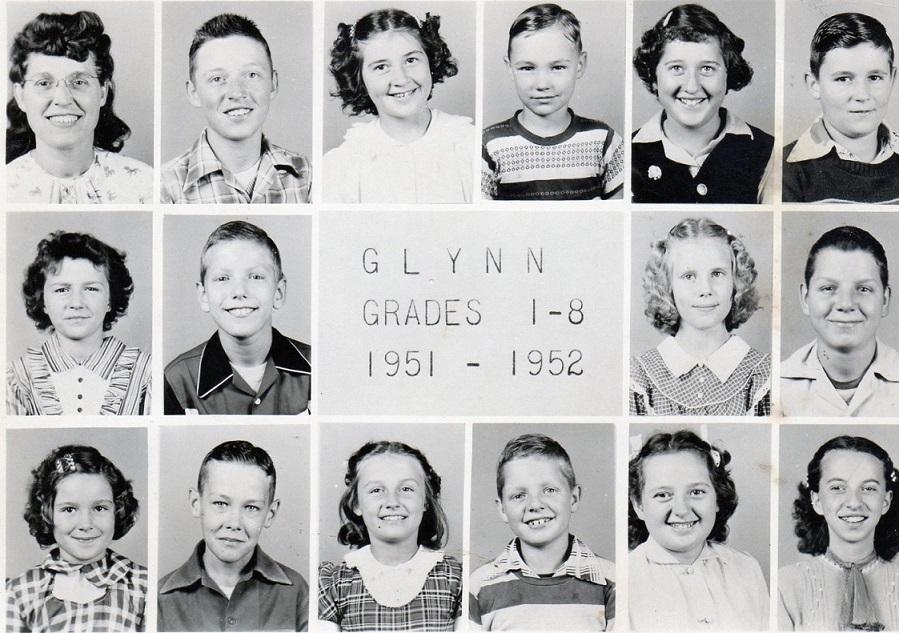Top row:Teacher: Mrs. Dale Harrington, 2nd student-Pat Maher, 5th & 6th students-also Mahers;
Middle row: 2nd student-Ken Potter;
Bottom row: 2nd student; probably a Gee, 6th student is Shirley Doyle.
If you can identify any other students in these photos, please contact the
Mills County Coordinator.
Glynn School
This was a country school, grades K-8. It was heated with a corn cob burning, pot belly, stove. Water was pumped from a well outside. Each day a boy was chosen as water boy.
It was an assigned duty. He had to bring back one bucket full of water each morning. The water was poured into a crock with a dipper. That was our drinking water for the day.
The rest of the water was poured into a large pan, and this is what we used to wash with. We had a merry-go-round, mayday pole with chains & handles and a swing set.
The girls had an outhouse in one corner of the back of the schoolyard and the boys' was in the opposite corner. We had a storm cave out in the playground yard in case
of bad weather.
Glynn school was about 50 yards away from my house and I just had to crawl over the fence into the schoolyard. There was no school bus service; so children had to walk,
get dropped off by their parents, or ride a horse. There was one brother and two sisters who rode the same horse to school every day (all three on the same horse)
no matter what. Back then there was no such thing as a "snow day"!
To enter the school you walked up three steps onto the very small entrance platform in the middle of the schoolhouse. You entered a door which took you into
the bell tower where the school bell rope hung. Then about three steps more, you went through another door that took you into the main schoolroom. There were two
small rooms, one on the left of the bell tower and one to the right. The room on the left was the cloak room and the wash room. The one on the right was the school
supplies store room. The teacher had her desk all the way to the back of the schoolroom with a pew-like bench in front of her desk. This is where each grade would
come up when called and have their classes. There weren't more than two to three students per class. There were no kindergarteners in 1951-1952.
During the summer break of 1953, the school was being repainted inside and out. The painters left all of their paint in the store room with the door closed.
The average temp that year was over 100 degrees and the paint combusted and caused the fire which burned the school to the ground.
We visited the school's site a couple weekends ago and the ground is still there as a pasture. Some of the old bricks from the school are still along the fence line.
The cob house is still standing and has been covered with metal sheeting. The cave has been filled in.
So many years ago...
Photo and narrative courtesy of Ken Potter

